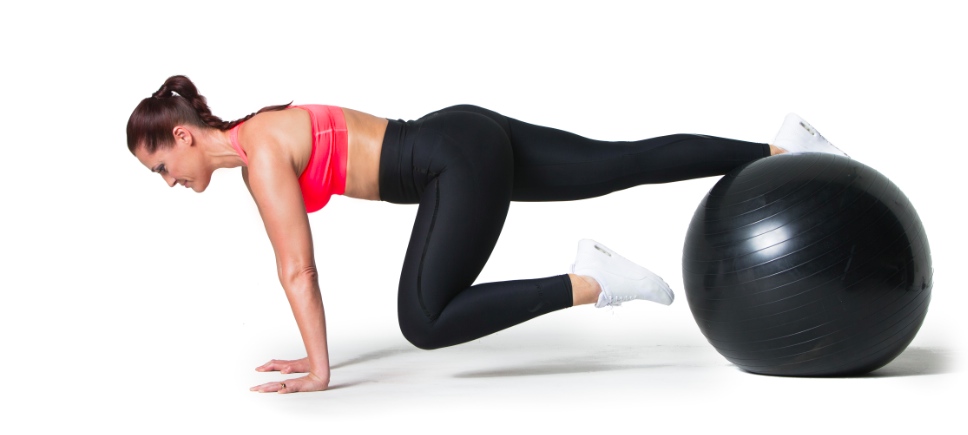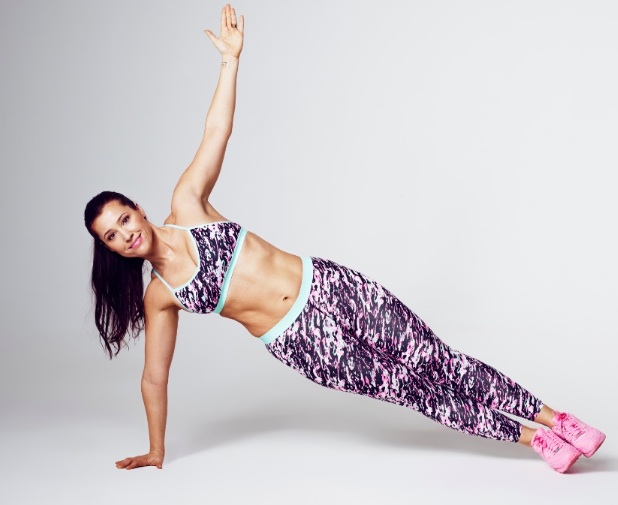After you have held a plank in various positions (called a static plank) for a while, it is time to move on to what I call dynamic planks.
See also: Plank guide, part 1: posture and when you can start after pregnancy
Dynamic planks are when you maintain the static plank but add arm or leg movements and even equipment. They are much tougher than regular static planks and are more technically difficult as well – not to mention challenging for the core. For these you should definitely use bracing! That’s what I mean by not holding a plank for longer and longer, but making the planks tougher and tougher instead.
See also: Plank guide, part 2: bracing, breathing and knee planks


Dynamic plank with leg raise
Lie on your stomach on a Swiss ball and take a couple of steps forward until you are in a straight plank position. Pull in your navel and lift your pelvic floor to stabilise your lower back. Raise one leg, hold for a few seconds and gently lower it. Change legs.
Remember: Don’t let your shoulders drop or arch your back. Keep your body as straight as possible. If you find the ball too wobbly, try doing it on the floor (easiest!) or a bench.
3 x 8–10/leg


Dynamic plank with knee tuck
Lie on your stomach on a Swiss ball and take a couple of steps forward until you are in a straight plank position. Pull in your navel and lift your pelvic floor to stabilise your lower back. Pull one knee in towards your chest and return to the starting position. Change legs.
Remember: Don’t let your shoulders drop and keep your body straight throughout the entire exercise. You can also try this plank on the floor (easiest!) or a bench.
3 x 8–10/leg

Front plank to side plank
Get into a full plank position with straight arms. Twist your whole body to the side and raise your arm towards the ceiling. Return to the starting position and change sides.
3 x 10/side
Photo Andreas Lundberg